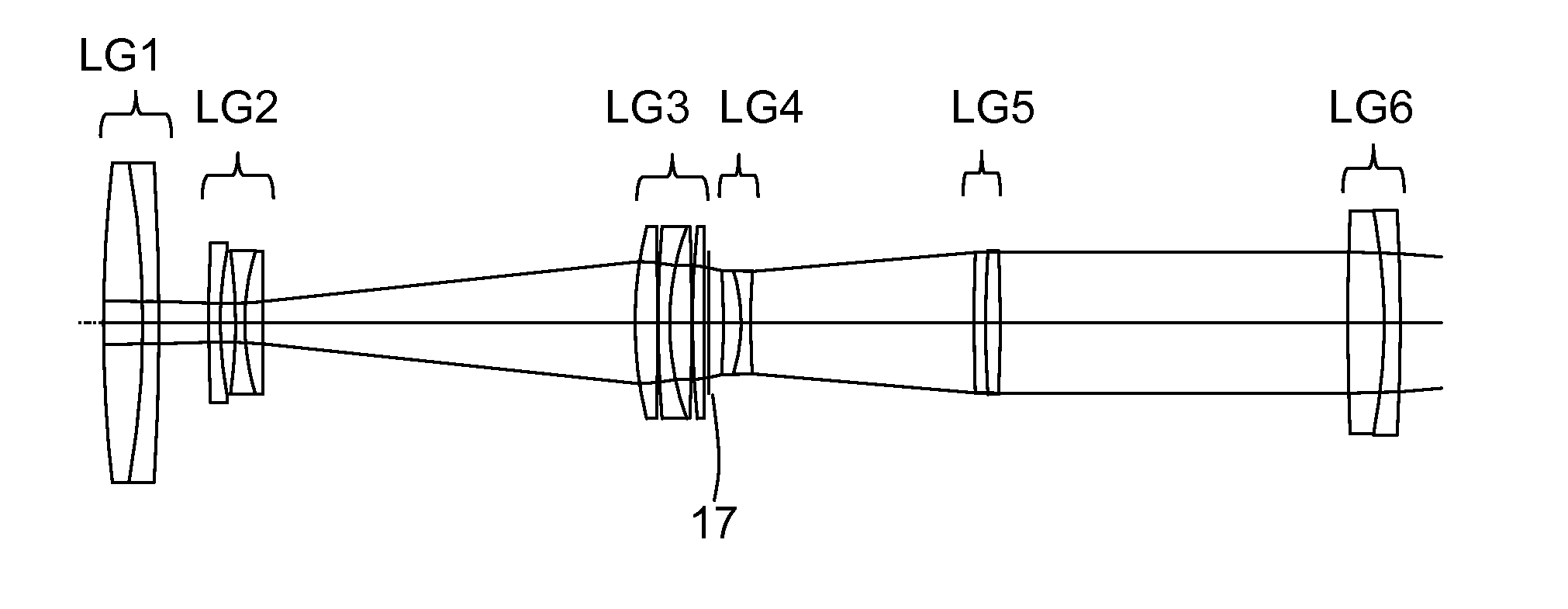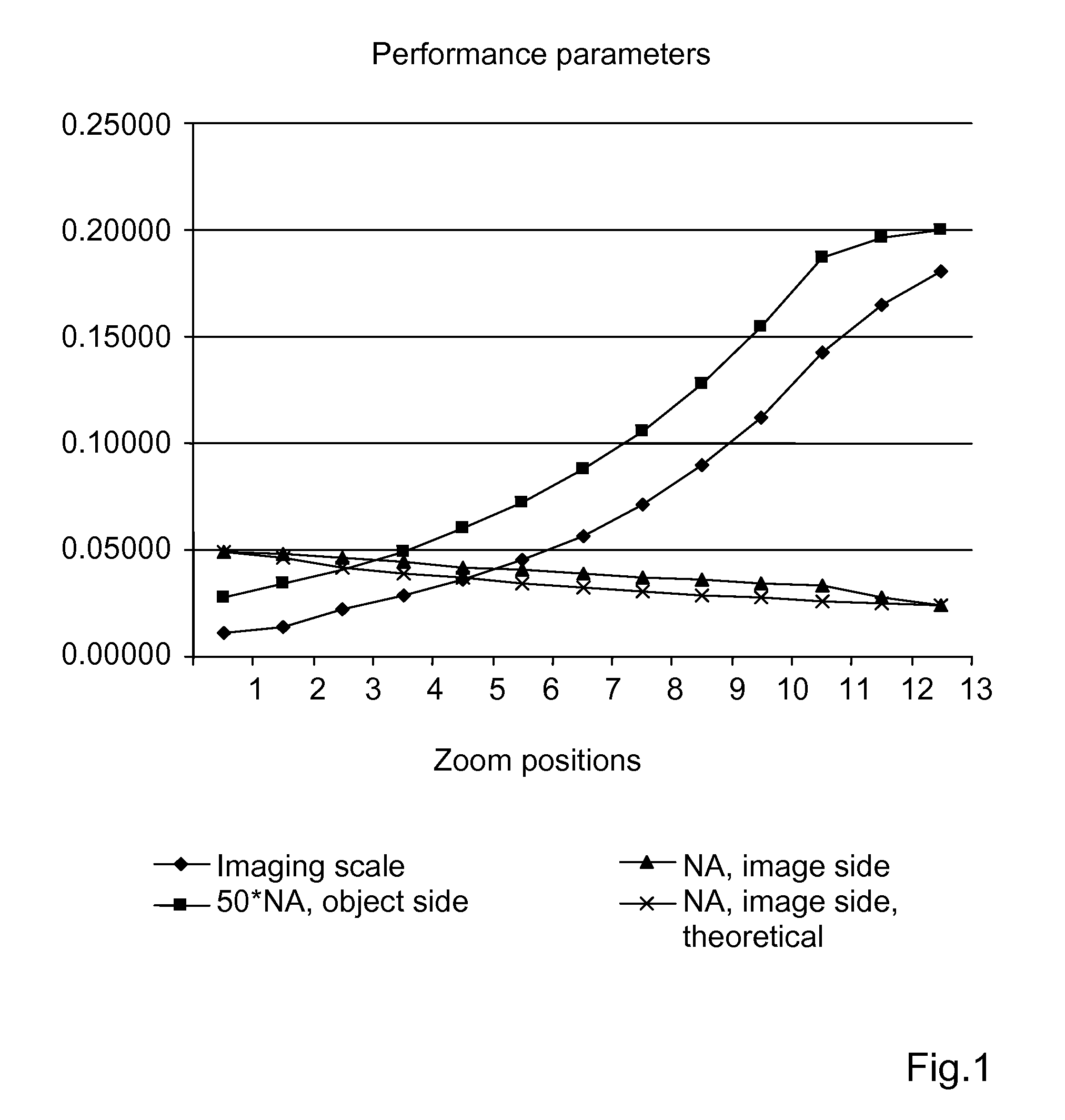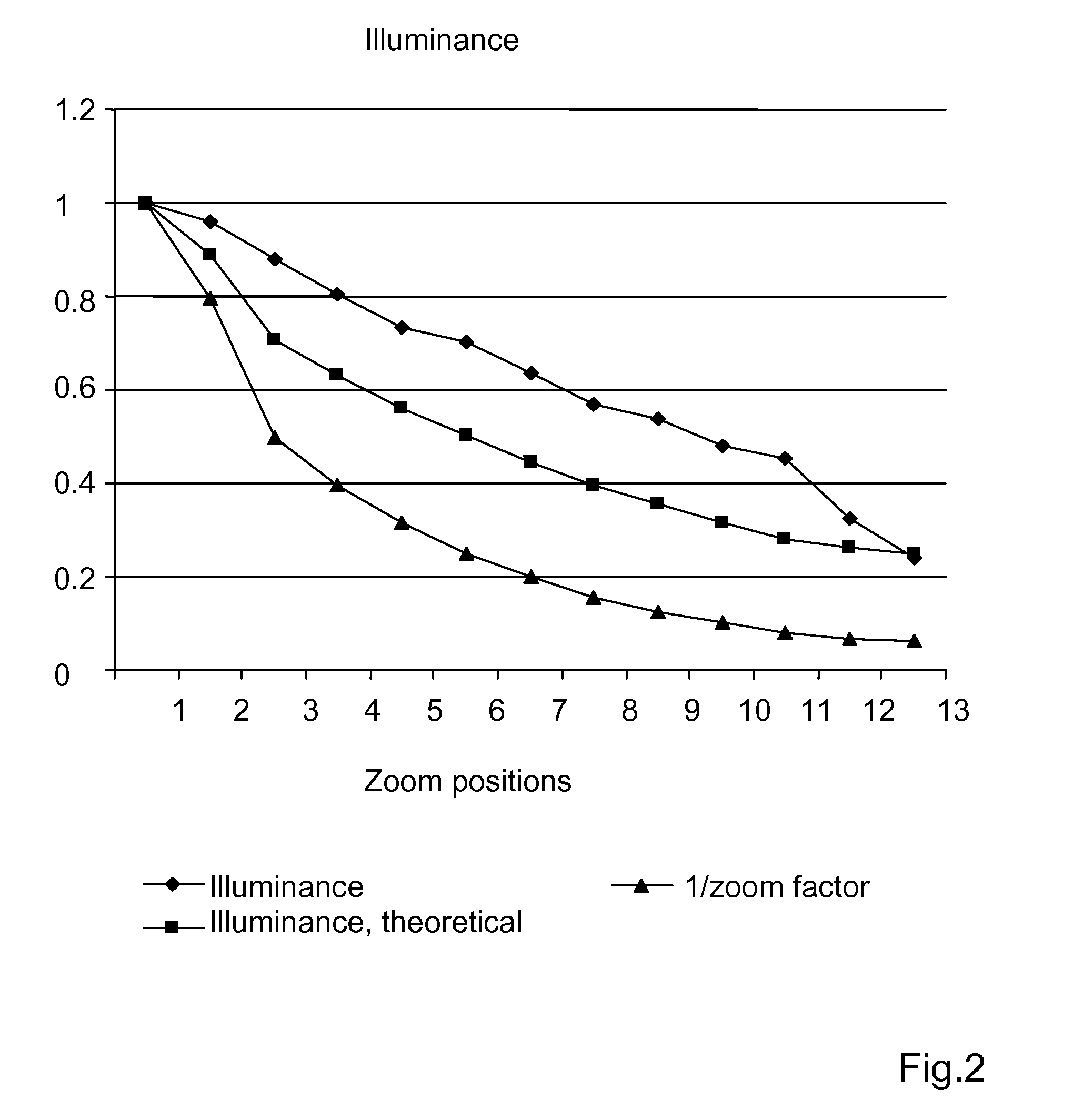Optical inspection system with a variation system consisting of five lens groups for imaging an object into infinity
an optical inspection system and variation technology, applied in the field of optical inspection systems, can solve the problems of object details within the shadow area that are difficult to resolve, their capabilities are limited, and the illuminance decreases considerably
- Summary
- Abstract
- Description
- Claims
- Application Information
AI Technical Summary
Benefits of technology
Problems solved by technology
Method used
Image
Examples
Embodiment Construction
[0006]Departing from this, the problem of the invention is to advance an optical inspection system of the kind mentioned in the beginning, in such a way that the advancement remedies the disadvantages of prior art. This should be achieved with the least possible technical outlay.
[0007]According to the invention, this problem is solved in such a way that[0008]the variation system consists of five lens groups and is designed to image the object into infinity,[0009]the lens group downstream of the variation system is intended for imaging the object from infinity into the image plane of the inspection system, and[0010]means for imaging the illuminating light into the exit pupil of the variation system are provided in the air space between the fifth lens group and the subsequent lens group.
[0011]Of the five lens groups of the variation system, the first, second and fourth lens groups (as seen in the imaging direction) are arranged so as to be movable along the optical axis, whereas the t...
PUM
 Login to View More
Login to View More Abstract
Description
Claims
Application Information
 Login to View More
Login to View More - R&D
- Intellectual Property
- Life Sciences
- Materials
- Tech Scout
- Unparalleled Data Quality
- Higher Quality Content
- 60% Fewer Hallucinations
Browse by: Latest US Patents, China's latest patents, Technical Efficacy Thesaurus, Application Domain, Technology Topic, Popular Technical Reports.
© 2025 PatSnap. All rights reserved.Legal|Privacy policy|Modern Slavery Act Transparency Statement|Sitemap|About US| Contact US: help@patsnap.com



